Power Reserve sub dial accuracy test
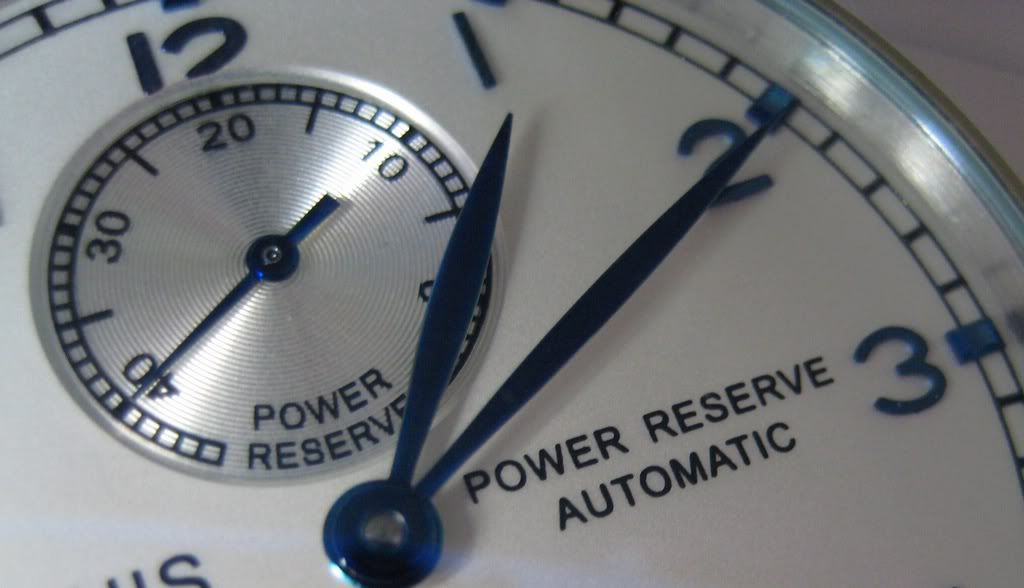 |
| The Parnis' power reserve sub dial. |
This Parnis is my first wristwatch with a power reserve gauge. Although it's not strictly necessary, I have to say the concept really appeals to me. It's functional, decorative, fun and reassuring, like an ink window on a fountain pen. As well as an indicator of the hours left before the mainspring winds down, I found it a handy measure of the speed with which the Parnis hand winds using the crown, or self winds during wear. Have a look at the clip below to see how the gauge rises as the crown is wound (the rustling bubble wrap is included for good measure as an auditory reference).
As a test of the power reserve dial's accuracy, I took off the watch and left it to wind down from fully 'charged' - an indicated maximum of 40 hours. Every so often, I came back & took a picture - click to zoom any photo.
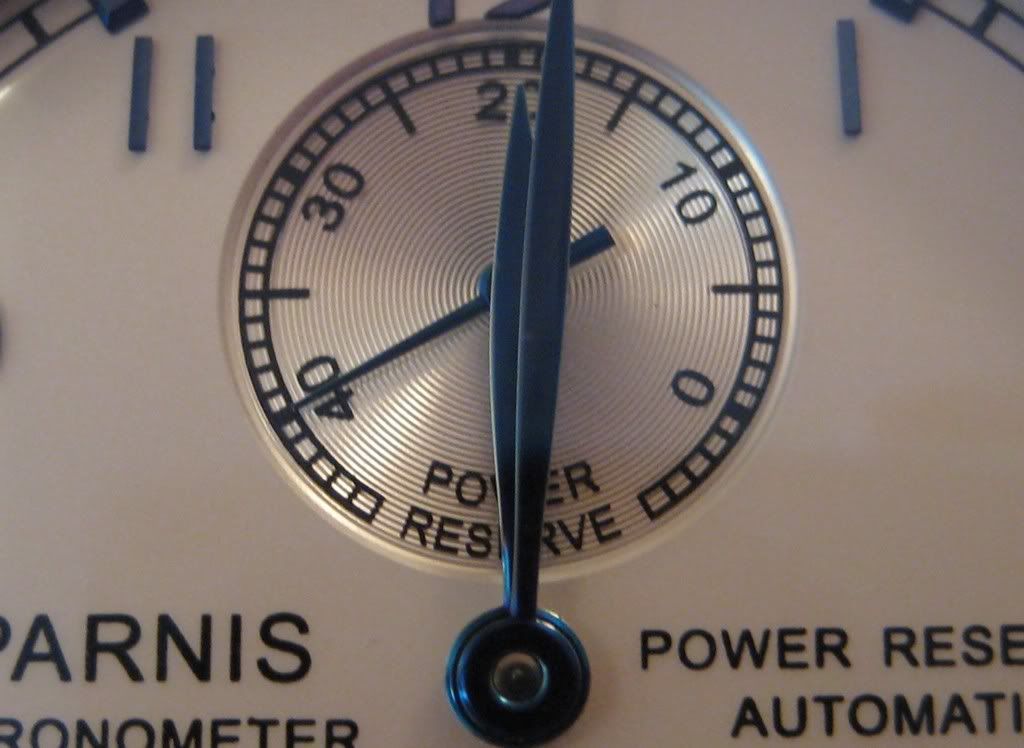 |
| 12.01 a.m., Saturday. |
The test begins one minute into a new Saturday, with the gauge at full power - the hand never goes past the 40 hours marker. With a half decent photo taken, the accuracy check is off to a great start, and I'm off to bed.
 |
| 1.03 p.m., Saturday. |
A few minutes past 1 p.m., lunchtime Saturday, and the sub dial shows 27 hours in reserve. So far, so good! 13 hours have elapsed since the last photo was taken, 13 indicated.
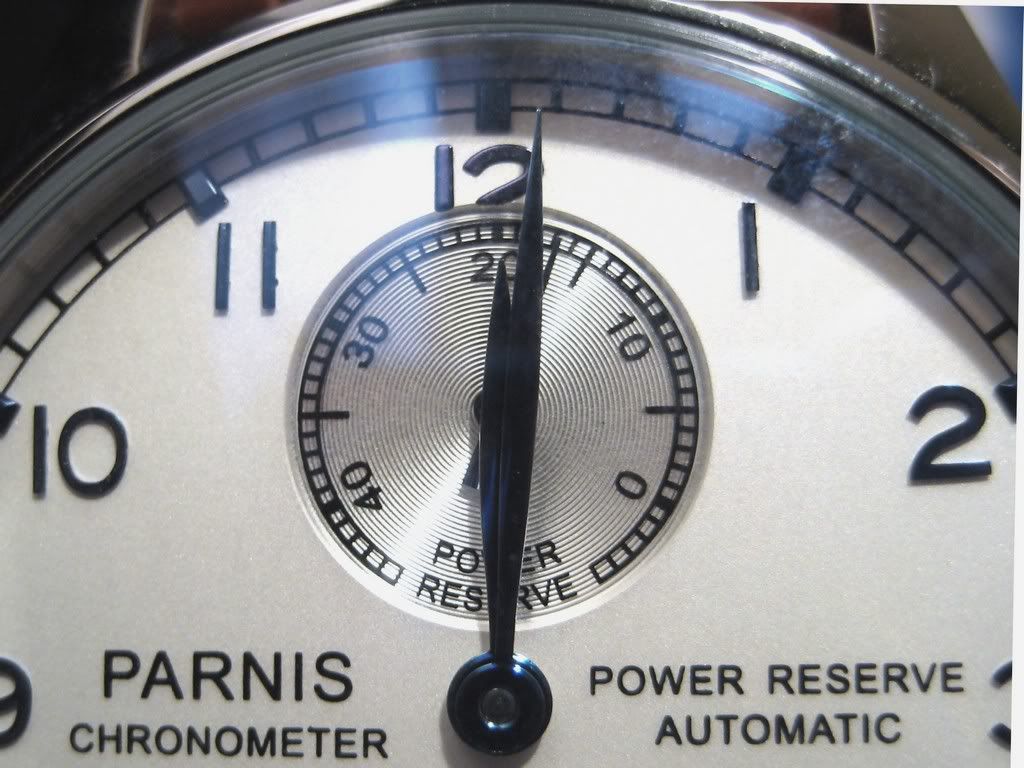 |
| 12.01 a.m., Sunday. |
Checking in the Parnis a minute into Sunday. The needle points to a 17 hour reserve. 24 hours have passed, so there is an hour's discrepancy here - the mainspring has been unwinding for 24 hours, while the dial suggests only 23. Still, not bad!
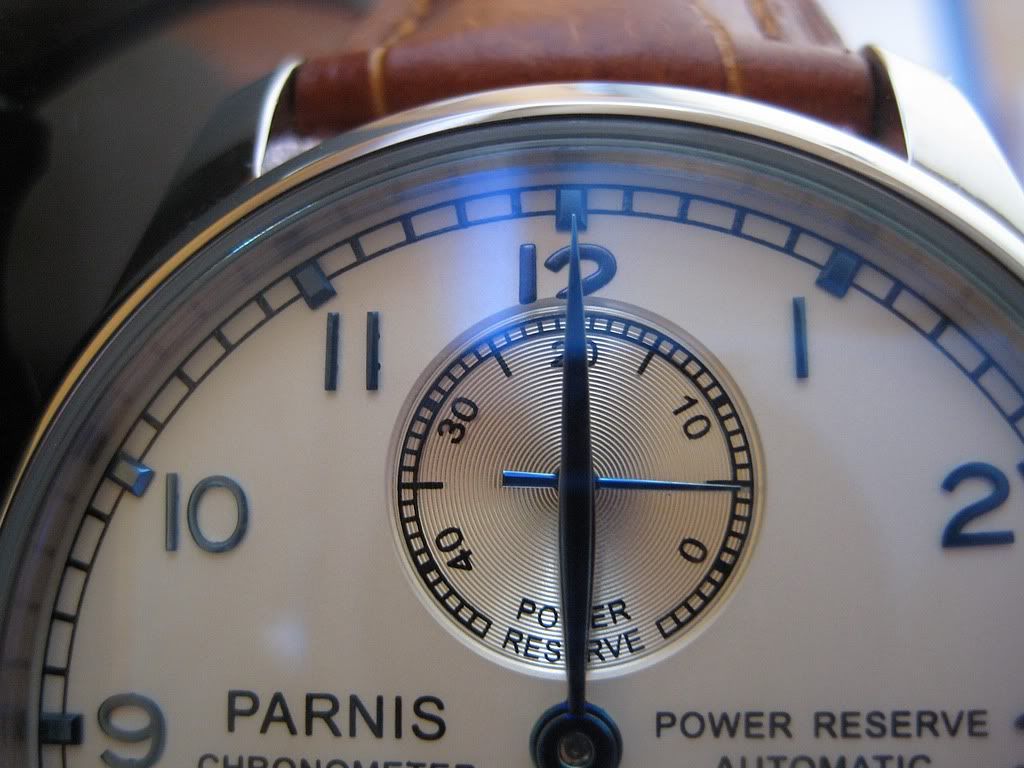 |
| 12.00 p.m., Sunday. |
I next checked the watch at midday, Sunday. With an indicated 5 hours left on the PR dial, I could see it was becoming gradually less accurate towards the lower end of the scale. It has been 36 hours since the start of this experiment, the dial suggests about 35.
 |
| 4.00 p.m., Sunday. |
With the gauge showing about an hour of run time left on the reserve, I was beginning to suspect that the claimed 40 hour capacity was overly pessimistic...
... In fact, the Parnis was still going strong - and keeping good time - 49 hours after it was fully wound! So as not to labour a point, here's the Parnis ticking away at 41, 45, 49 and finally at a dead stop at 51 hours, 15 minutes after winding.
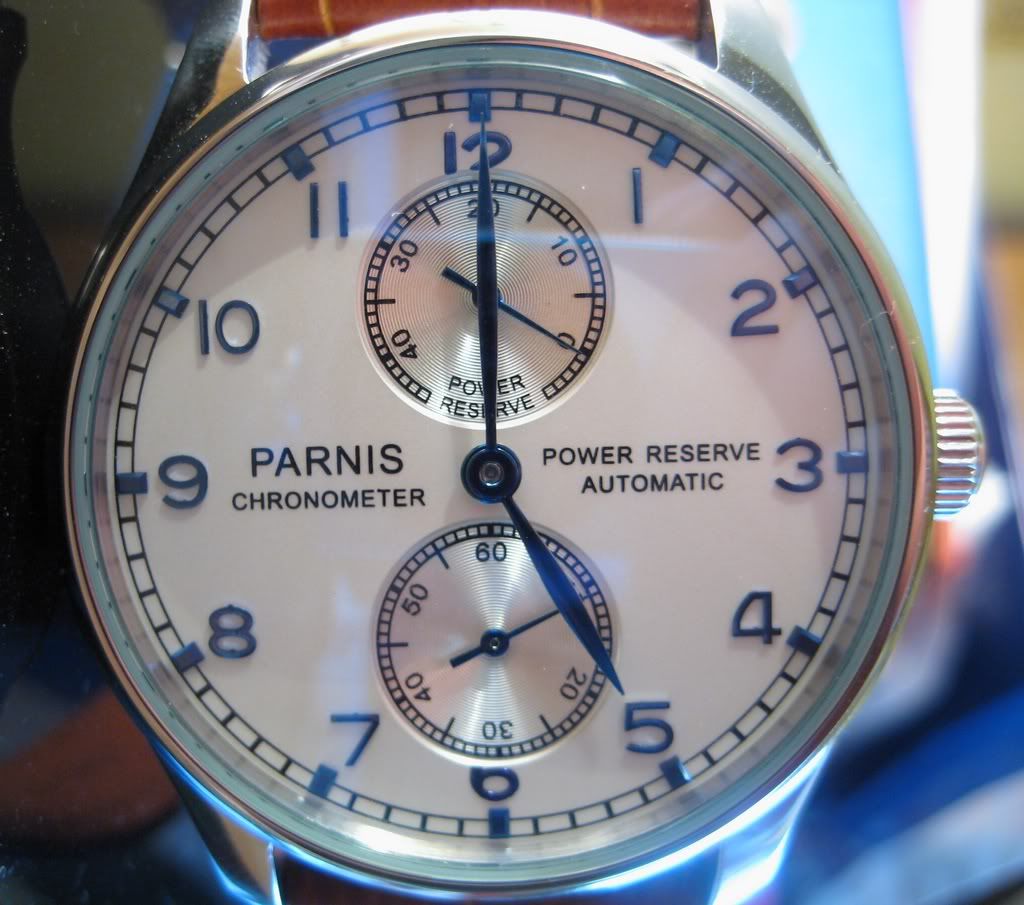 |
| 5.00 p.m., Sunday. |
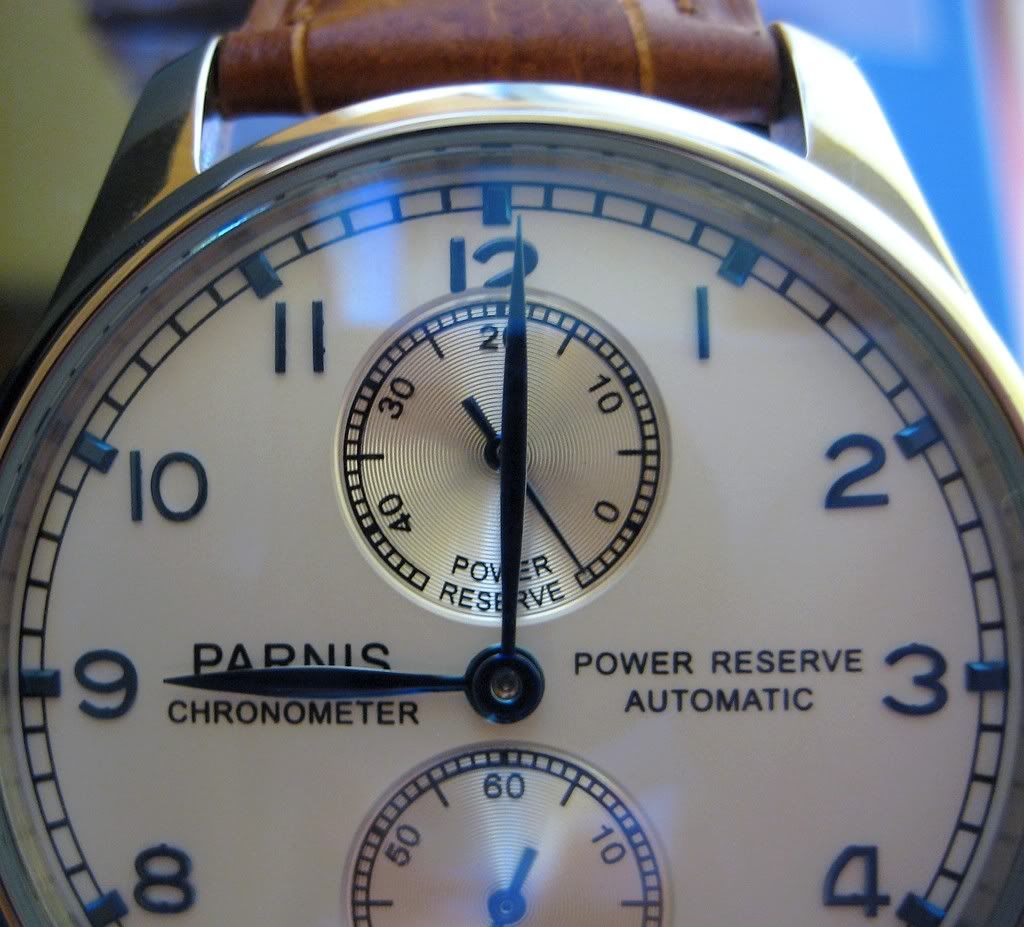 |
| 9.00 p.m., Sunday. |
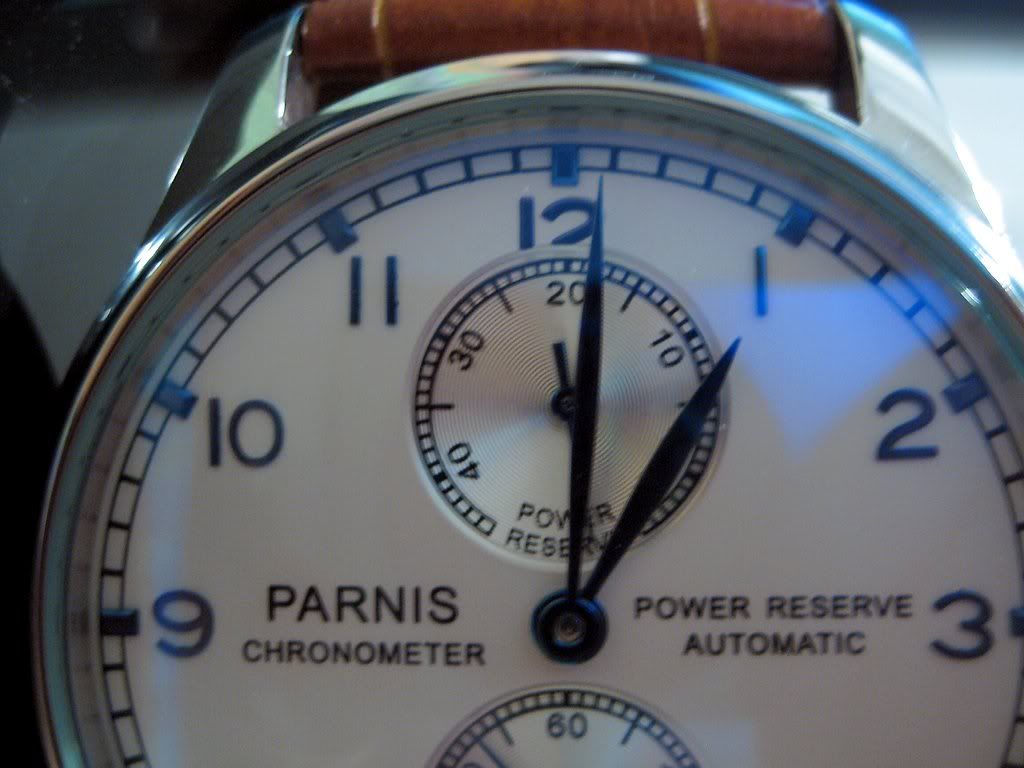 |
| 1.00 a.m., Monday. |
 |
| The Parnis finally stopped during the night, at 3.15 a.m. |
Notice that while the needle never exceeds the forty hours marker, at the other end of the scale, it will drop below zero as the watch runs into the second day.
Conclusions? Well, I'm more than happy that the Parnis' true power reserve exceeds two full days. While the power reserve indicator isn't right on the button, I do prefer by far that there is slightly more in reserve than indicated rather than less. Of all the options for the top sub dial - perhaps a day-of-the-week wheel as with the Jaragar, or a hard to discern date hand - I think whoever designed this model came up trumps with the power reserve.
Next up - some final mindthots on fettling the Parnis to self wind a bit more quietly, fitting stronger spring bars for the strap, regulating, &c.
Loved your review, also thanks for taking the time to illustrate it with such nice close-up photos. Greetings from Budapest!
ReplyDeleteThanks for reading Zsolto! In 5 months, I hope to sit my first BHI watchmaking exams, so hopefully I'll be able to service the Parnis soon (and blue the screws for real, over an alcohol lamp!)
ReplyDeleteI woud love to visit Hungary some day!
Thanks Mr F. I've just pulled the trigger on one of these on Ali Express. £59.99 from mywatchcode seems a bargain with the pound at its current level. I bought the blue sunburst dial version but I'm wondering if I should have gone with the white one, but we'll see. Zsolto - Is that you, Mr Kaldos? I've taken a temporary break from Facebook's madness but I miss the IWA group. b a r n m a b b s
ReplyDelete